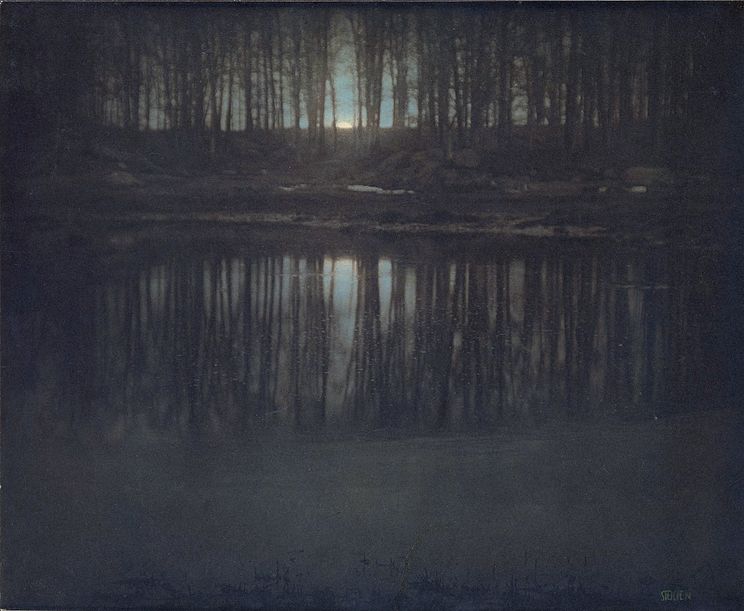Eduard J. Steichen
Eduard J. Steichen was an American photographer who immigrated to the United States from Luxembourg with his parents when he was a small child. He was a well known photographer for Vogue and Vanity Fair Magazines. He was first interested in drawing and painting and gradually opened up to the idea of photography and bought his first camera. Some of his photography friends and him eventually formed a group called Milwaukee Art Students League and hosted lectures about art. His most famous photograph is "The Pond- Moonlight" which is shown below.

This may be Steichen's most famous photographs but it is not one of my favorites. The composition is too dark for my liking and though the reflection is clear in the pond the edges are blurry and dark. This photo doesn't appeal to me, it's too dark and dreary.

This photo called "Isadora Duncan in the Parthenon, Athens" is my favorite by Steichen. I like that you can see the detail of the posts beside her, the grittiness of them. I also like how she blends into her background, the only light in this picture. I like that he caught the shadows of the pillars on the ground in front of her and that you can see the light between them.

This photo is titled "Experiment" and I have mixed feelings about this photo. I like the different colors that have been exposed in the photo but I don't like the gritty quality of the photo. It makes the photo look more like a painting than a photo and I don't like that, I think he should differentiate between his painting masterpieces and his photography masterpieces. His shouldn't incorporate that much of his other skill into his photography. I enjoy the color but the clarity could have been clearer.
Walker Evans
Walker Evans is most famous for his photos that document the Great Depression. He is known for using wide format for all his photos. He took photos for the Farm Security Administration for quite a while after he campaigned for the Resettlement Administration. Evans stayed with three different families and took photos of them during the Great Depression and it was published in the famous book, Let Us Now Praise Famous Men.




I like this photo by Evans because of the bright quality it gives especially on the house. Everything else is shadowed beside the main house, making it the subject of this photo, and it makes the house look even better. The contrast between the dark and light is especially important in black and white photos (at least to me it is) and this photo tells me that he took the time to find where the light was and how it would affect his photograph as a whole.

I like this image by Walker Evans as well. This is from his well known collection, Subway. I like this because although there are two adults in this photo the child is the main focus of the photo. The woman's face is shielded by a newspaper and the man's face is only somewhat in the frame. It's interesting how he noticed this and took the picture. The child's face is also the brightest and we can see the whole face. It's almost as if Evans is saying that children have nothing to hide, but some adults do.

I like this photo because the image is distorted, yet it still remains to be a beautiful photo. You can see reflections on the glass and this blocks our view of the men eating lunch but it doesn't ruin the photo. The reflective surface merely adds to the illusion of the photograph. I like it also because its a simple photograph. It's just two men eating lunch and one of the looks like he is in the middle of a conversation. Yet the simplicity of the scene merely adds to the somehow glamorous effect the photo gives.
No comments:
Post a Comment